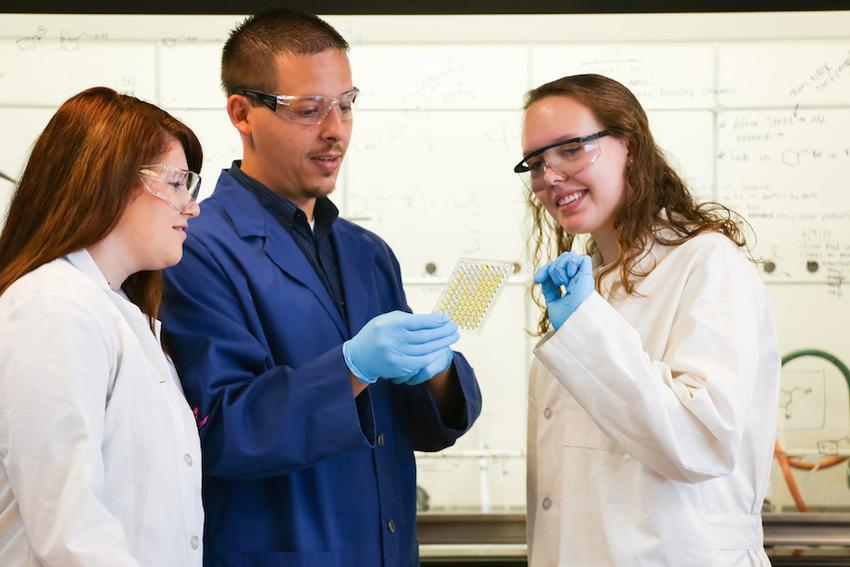

Shelby Furman and Hailey Kintz peer up through the bottom of a clear plastic plate full of wells of bacteria.
The growth inside is a strain of staphylococcus aureus—yes, that staph—which generally sends people who encounter it running to the sink to scrub their hands. But, for Kintz ’17 and Furman ’16, the growth is a welcome sight.
"Hey!" exclaims Hailey. "Looks like we’ve got some good results!"
The bacteria aren’t present in all the wells—that’s the good news. Furman and Kintz spent a semester in the laboratory designing and making bacteria-fighting compounds they are now testing on the staph. Some of the compounds took upwards of a half-dozen chemical reactions to produce—and some have never before been tested for efficacy.
The pair of students operate like two sides of the same coin. Kintz, of Sterling, is much more interested in running the experiments and manipulating the bacteria. Furman, of Stafford, is a self-described germophobe and handles the complicated mathematics and chemical synthesis that has allowed the students to get to this point.
As they peer up through the bottom of the plate, Dr. Andrew Yeagley, assistant professor of chemistry, calls out which wells are empty and which have bacteria. Each bacteria-killing compound has its own column and is more diluted as the researchers move down the plate.
"Column D has no bacteria in wells one through five," calls out Yeagley, as the students record the notes. "Column E has no bacteria in wells one and two and slight growth in well three."
Furman flips back a few pages in her notebook. She sees that the compound they created for column D is obviously much more effective than its neighbor, killing the staph bacteria even though very diluted. To the students, this one holds the most promise.
This simple procedure—peering up through a plate of bacteria and recording the data—is the culmination of several weeks of preparing, diluting, testing and monitoring the compounds.
For Furman and Kintz, their summer work has a very practical upside. Organic chemistry classes taught at universities across the country could include experiments making molecules just like theirs. At Longwood, however, Furman and Kintz have the opportunity to take the work a step further—testing the efficacy of their creations against real bacteria. Once finished, their data will be shared with labs in other universities for students to replicate and learn.
"We aren’t only learning skills that mimic professional synthetic chemists," said Furman. "We are working on something that will help other students in a real way. It’s exciting to think about this work that way."
